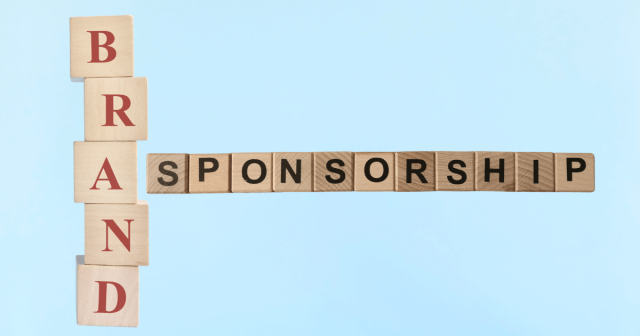Brand sponsorship is a marketing strategy where a company supports an event, person, or organization financially or through services in exchange for visibility and promotion. It is one of the most direct ways brands connect with audiences in meaningful environments.
Whether it’s a sports team, a YouTuber, a podcast, or a local event, sponsorship is everywhere. It’s not just about logos anymore. It’s about trust, alignment, and long-term relationships.
Let’s dive into how brand sponsorship works in today’s marketing world.
Understanding the Basics of Brand Sponsorship
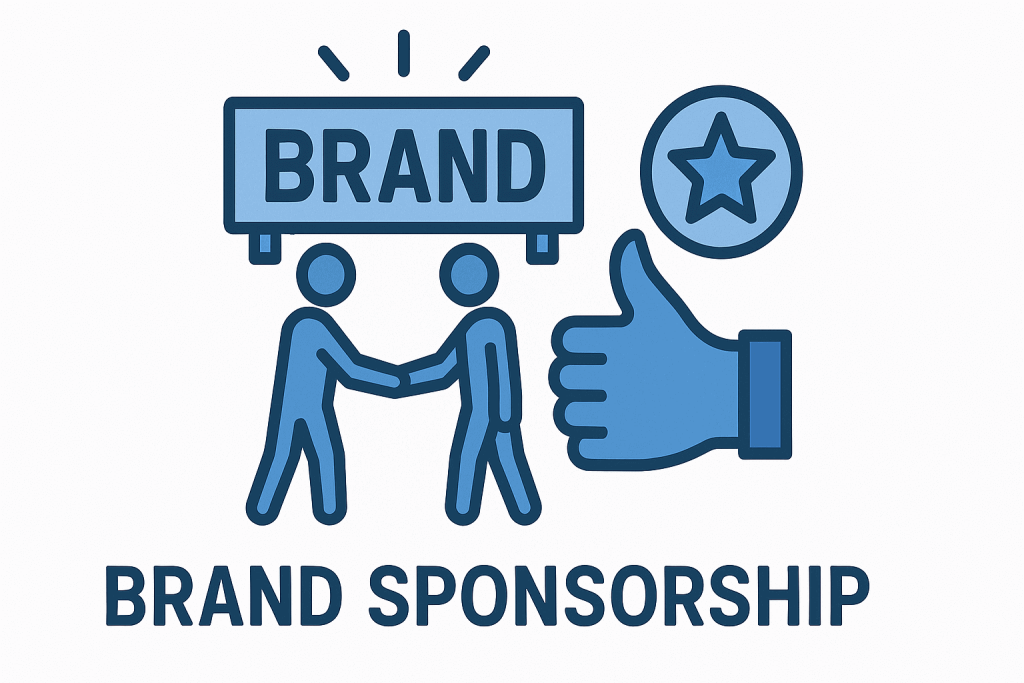
Not Just a Donation—It’s a Deal
Brand sponsorship is a business agreement. The sponsor provides money, products, or services. In return, the sponsored party promotes the sponsor. It’s a two-way value exchange.
Think of Red Bull sponsoring extreme sports. Red Bull gets attention from a like-minded audience, while the event gets funding and credibility.
It’s All About Audience Alignment
The key to effective sponsorship is audience match. If your brand sells fitness gear, sponsoring a marathon makes sense. But sponsoring a chess tournament? That may not be the best fit.
Good sponsorships feel natural. They don’t interrupt—they belong.
Types of Brand Sponsorship in Marketing
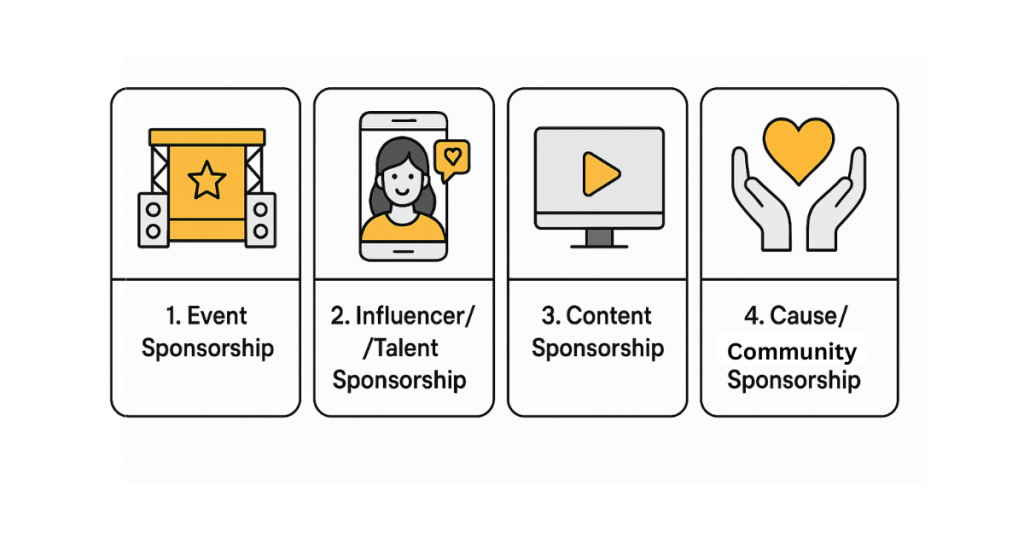
There are many types of sponsorships, but the most common are:
1. Event Sponsorship
Companies pay to be visible at events. Music festivals, sports games, and tech conferences—all are ideal opportunities.
2. Influencer or Talent Sponsorship
Brands partner with individuals who already have a strong audience. Think athletes, YouTubers, or podcast hosts.
3. Content Sponsorship
Sometimes a brand sponsors a video, blog series, or podcast. Their logo is featured, and their product may even appear naturally in the content.
4. Cause or Community Sponsorship
Brands often support non-profits or community programs to build goodwill. It boosts both image and trust.
Why Brands Choose Sponsorship as a Strategy
Sponsorship can do things that traditional ads can’t. It builds trust faster. It places your brand inside real experiences. It tells people: “We care about what you care about.”
Builds Brand Awareness
People remember brands they see at events or hear from trusted creators. Sponsorship makes your brand visible in the real world, not just online.
Builds Brand Trust
If a customer trusts the person or event you’re sponsoring, that trust often extends to your brand. It’s marketing through association.
Targets the Right Audience
Instead of targeting broad groups with ads, sponsorship allows you to reach very specific, engaged communities.
Real-World Example: Nike and Sports Sponsorships
Nike has sponsored athletes and sports teams for decades. It’s not just about brand logos on jerseys. It’s about the emotional connection fans feel when they see their favorite player wearing Nike gear.
This emotional branding is hard to replicate with traditional advertising.
How Brand Sponsorship Differs from Advertising
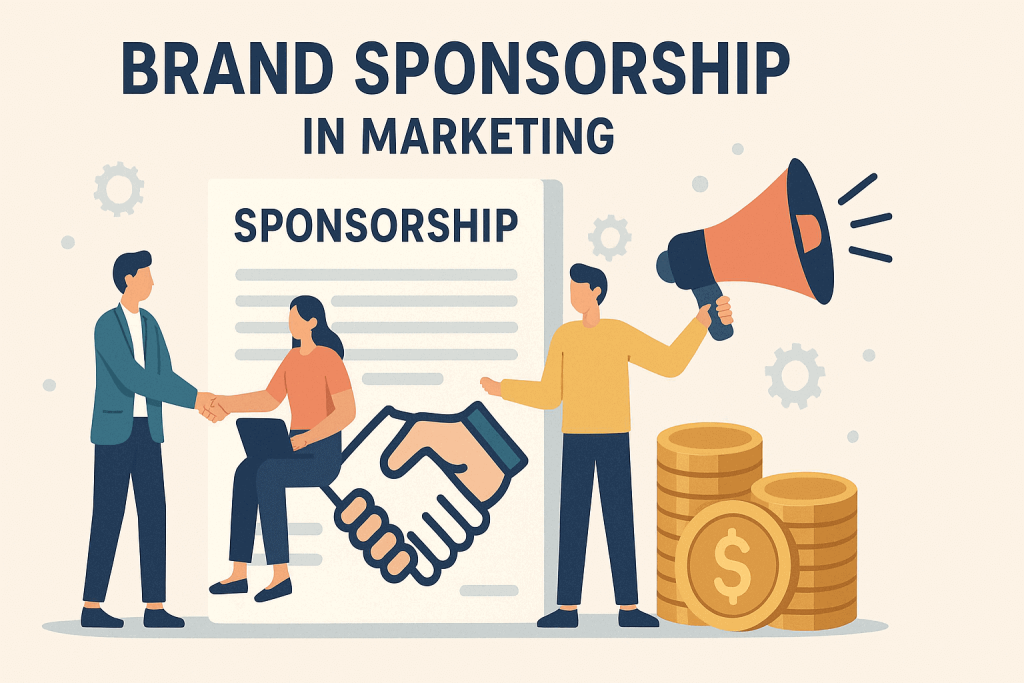
Advertising is a message you pay to broadcast. Sponsorship is a relationship you build.
Control vs. Collaboration
In ads, brands control every word. In sponsorships, the message is shared through someone else—an event host, an influencer, or a team.
Short-Term vs. Long-Term
Ads can deliver quick results, but they fade fast. Sponsorship is more long-term. The benefits grow over time as trust builds.
The ROI of Brand Sponsorship
Return on investment (ROI) is always important. But the ROI of sponsorship isn’t just measured in sales.
Brand Lift
You get long-term brand visibility. Even if someone doesn’t buy right away, they remember you.
Content Opportunities
Sponsorship often brings content you can use. Photos, videos, testimonials, or mentions can be repurposed for your own marketing.
Community Positioning
Sponsorships place your brand inside real communities. That’s more powerful than a simple ad.
Challenges of Brand Sponsorship
While sponsorship has benefits, it’s not without risks.
Audience Misalignment
If the audience doesn’t care about your product, it’s a waste of money. Always research who you’re reaching.
Poor Activation
Just putting a logo somewhere isn’t enough. You need to activate the sponsorship—engage with the audience in real time.
No Guarantee of Sales
Even the best sponsorship won’t always lead to immediate sales. It’s about relationship-building first.
How to Create a Strong Brand Sponsorship Plan
If you want to sponsor as part of your marketing strategy, keep these steps in mind:
1. Define Clear Goals
What do you want from the sponsorship? Visibility? Brand trust? Community impact? Be clear.
2. Choose the Right Partner
Look at audience data, values, and previous partners. Do they align with your brand?
3. Create an Activation Strategy
Don’t just show up. Plan how you’ll engage—through booths, social media, giveaways, or exclusive offers.
4. Measure What Matters
Track brand mentions, social reach, content performance, and audience feedback. These show whether your sponsorship worked.
Future Trends in Brand Sponsorship
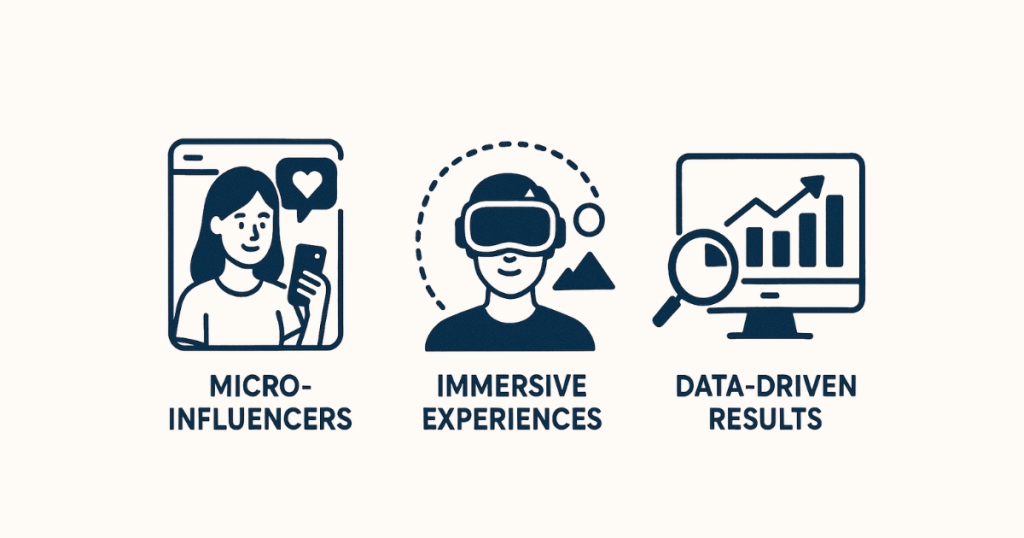
The landscape of sponsorship is changing fast. Digital sponsorships are growing. So is personalization. Here’s what’s coming next:
Micro-Influencer Sponsorships
Smaller influencers with highly engaged audiences are becoming more valuable. Their content feels real and authentic.
Branded Experiences
Brands are moving beyond logos. They now create full experiences—like pop-up stores, VR events, or custom digital content.
Data-Driven Sponsorships
Smart brands are using data to choose the right sponsorships and track their impact in real time.
Final Thoughts
So, what is brand sponsorship in marketing?
It’s more than just a logo. It’s a strategic partnership that puts your brand in front of the right audience at the right moment. It’s about trust, relevance, and lasting impact.
Done well, sponsorship doesn’t feel like advertising. It feels like belonging. And in a noisy marketing world, that’s the edge every brand needs.
To understand the impact of brand sponsorship, it’s helpful to explore the 5 As of branding, which highlight key elements of consumer-brand relationships.

